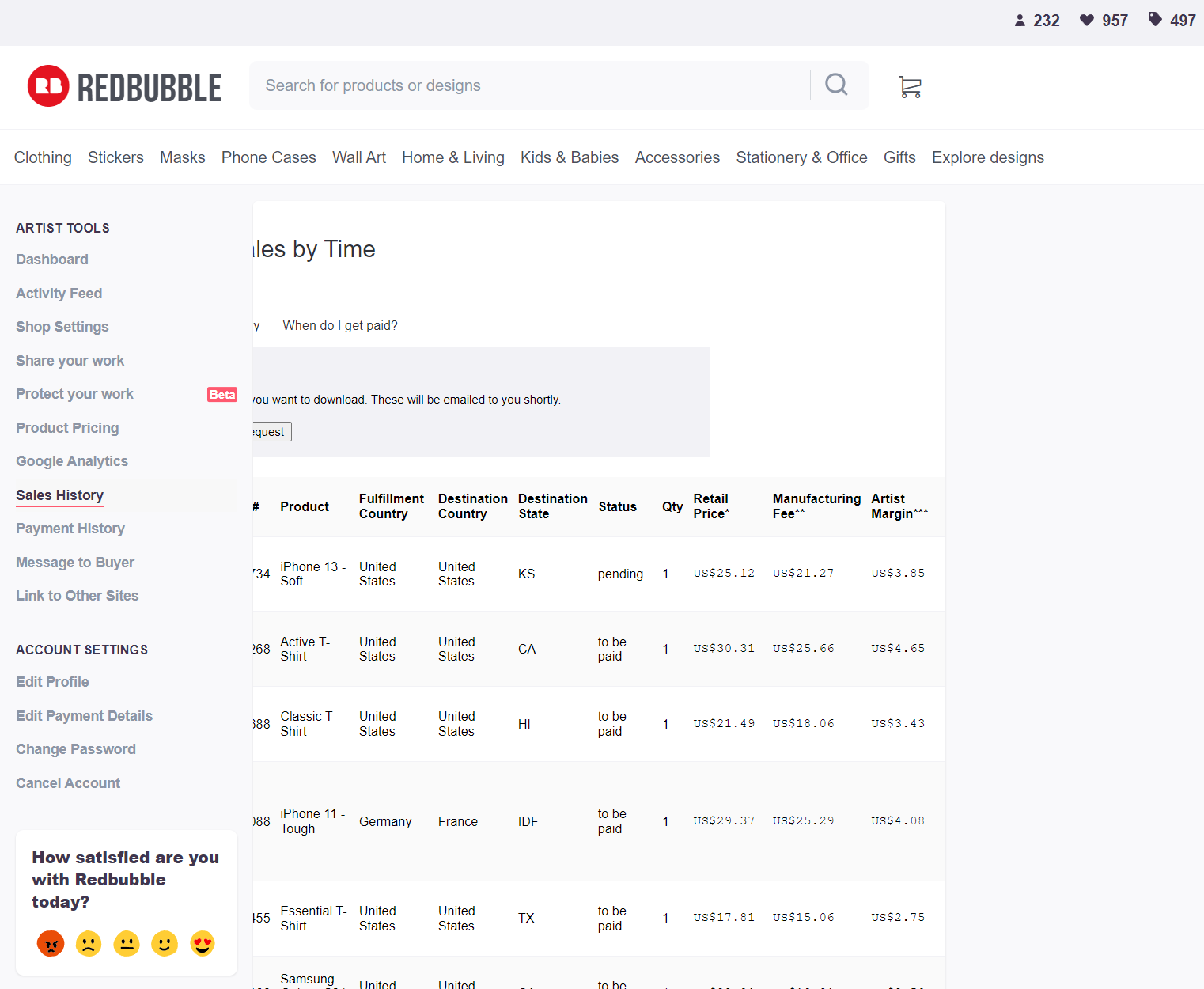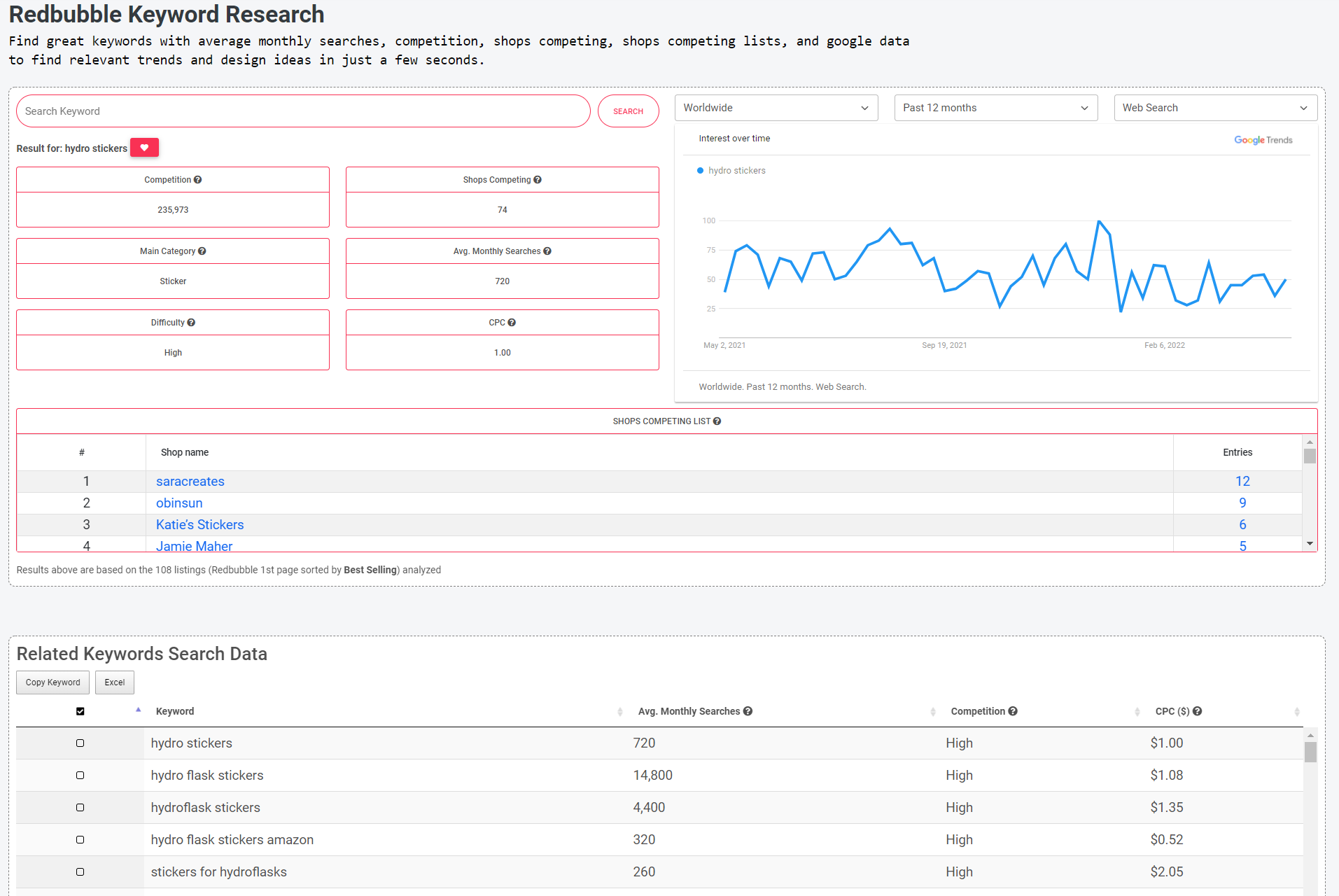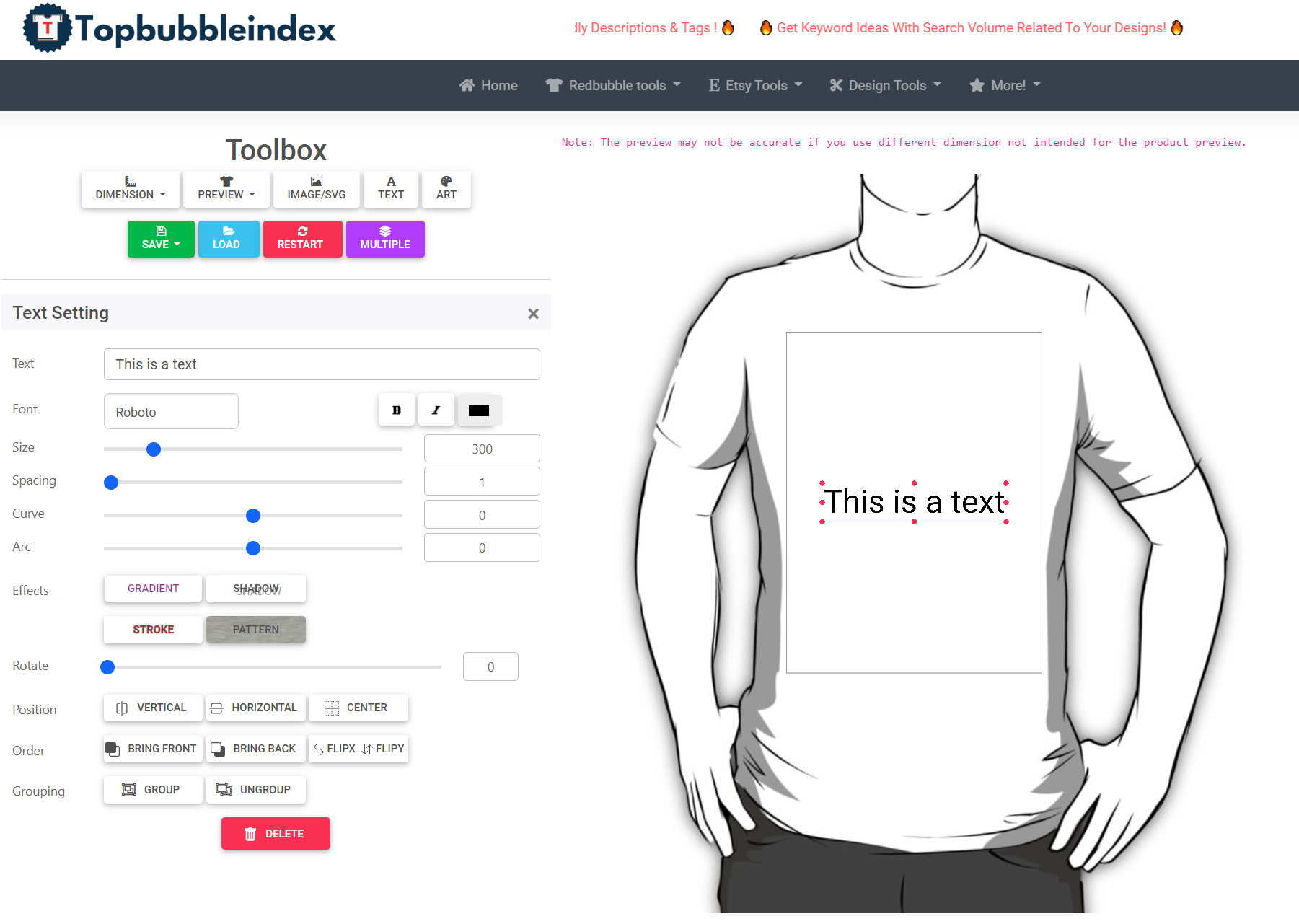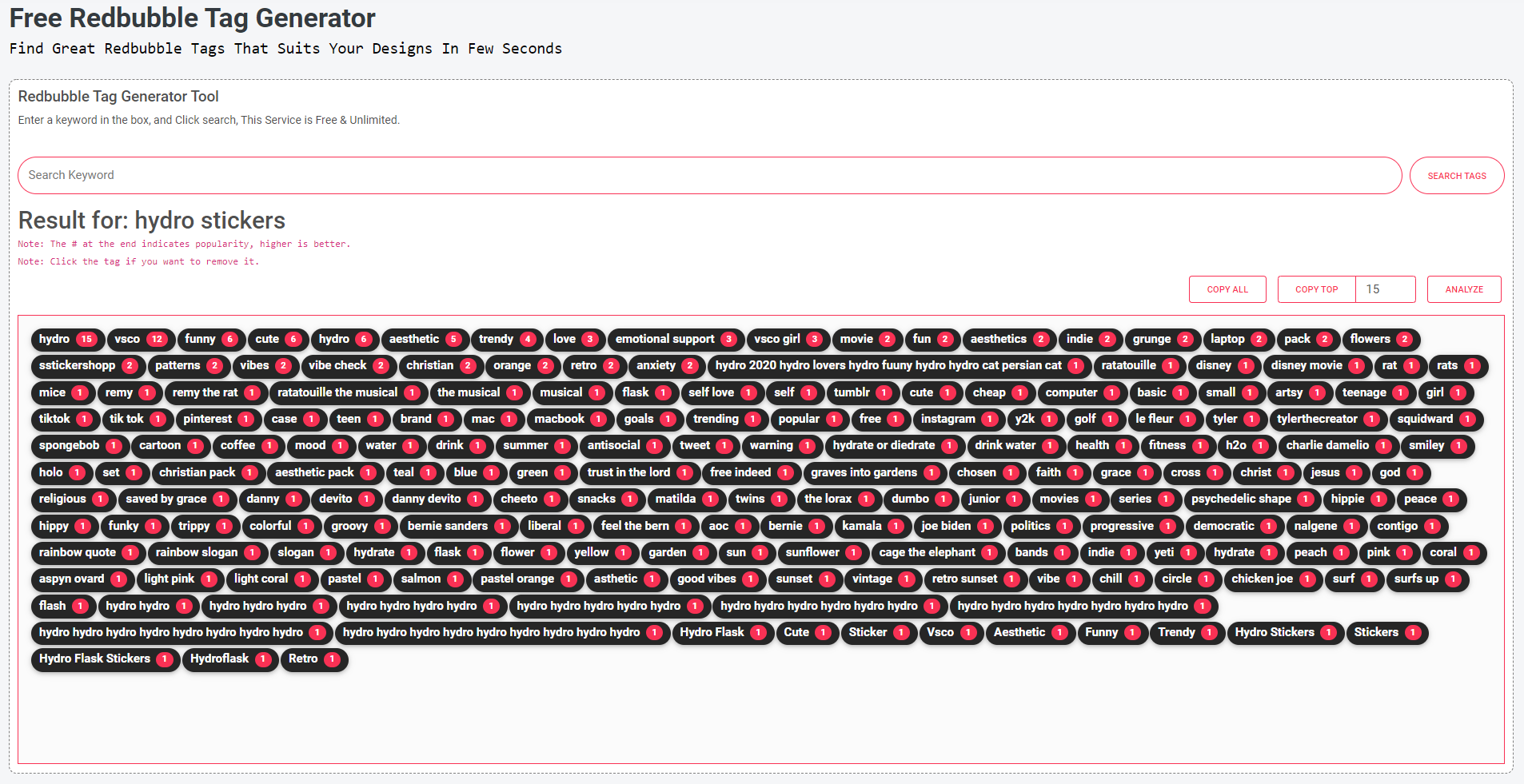As an artist, I’ve always searched for creative ways to share my work and earn some extra income. A few years ago, I stumbled upon Redbubble, a platform buzzing with artistic potential. I uploaded a few designs, not expecting much. But then, one day, the sales started trickling in, and what began as a side project transformed into a consistent source of passive income. Even with Redbubble’s recent changes to their fee structure, I’ve been able to adapt my strategy and continue to see success. So, is Redbubble still worth it? Absolutely! But it requires a bit more effort and understanding than before.
Redbubble is a print-on-demand (POD) marketplace, a unique platform that eliminates many of the traditional hurdles for artists looking to sell their creations. No more managing inventory, dealing with production, or worrying about shipping logistics – Redbubble handles it all. With millions of potential customers from across the globe, Redbubble offers an exciting opportunity to turn your art into a thriving online business.
- Understanding Redbubble: How It Works
- Features and How to Use Them Effectively
- Marketing Your Shop: Reaching More Customers
- Alternatives and Comparisons: Finding the Right Fit
- Concerns and Criticisms: Account Suspension and Customer Support
- My Own Experience: Finding Success on Redbubble
- Is Redbubble Worth It: Final Verdict
- FAQs
- Conclusion
Understanding Redbubble: How It Works
Before we delve into the specifics, let’s take a look at the foundation of Redbubble’s success: the print-on-demand business model. Essentially, POD allows you to sell products without holding any physical stock. When a customer places an order on Redbubble, the company prints your design on the chosen product, packages it, and ships it directly to the buyer. You, as the artist, only need to focus on creating amazing designs and uploading them to the platform.
Redbubble acts as a bridge between artists and customers, providing a vibrant marketplace where creative designs meet a diverse range of products. This unique setup removes the burdens of traditional business operations, enabling artists to focus on their passion – creating art.
Features and How to Use Them Effectively
To truly thrive on Redbubble, it’s essential to understand its key features and how to utilize them to your advantage.
Product Catalog: Maximizing Variety
Redbubble boasts an extensive product catalog, featuring over 70 items, from apparel and accessories to home decor and stationery. T-shirts, stickers, phone cases, mugs, and wall art are just a few of the popular choices available.
This wide selection is a double-edged sword. While it opens doors to more potential sales and caters to diverse customer preferences, it also requires you to adapt your designs to different product types. However, with a little planning and creative thinking, you can easily leverage the diverse catalog to your benefit.
Artist-Set Profit Margins: Taking Control of Your Earnings
One of Redbubble’s standout features is its flexible royalty system. Unlike fixed-commission marketplaces, where your earnings are predetermined, Redbubble allows you to set your own profit margins for each product. You have the power to control your pricing strategy and ensure you’re earning a fair amount for your creative work.
This flexibility allows you to experiment with different pricing models. You might choose a higher markup for premium products like framed art prints, while keeping a lower margin for everyday items like stickers to remain competitive.
Redbubble Fees: Navigating the New System
In 2023, Redbubble introduced a new fee structure based on a tiered system. The tiered system aims to reward artists who create unique, original designs while discouraging those who rely heavily on pre-made design elements or spam the marketplace with similar artwork.
While this new system can be beneficial for artists producing unique, high-quality designs, it has also raised concerns about the increased fees for some artists. It’s crucial to understand how these fees are calculated and how they might affect your earnings. We’ll explore strategies for mitigating the impact of fees on your profits in a later section.
How Redbubble Payments Are Calculated
Redbubble’s payment system is based on three main components: the base price, the artist margin, and applicable taxes. Here’s a detailed breakdown of each component:
- Base Price:
- The base price includes Redbubble’s costs for manufacturing, handling, and service fees.
- It varies by product type, reflecting the materials and production processes involved.
- Artist Margin:
- As an artist, you set a markup percentage above the base price, which determines your profit.
- For instance, if a T-shirt has a base price of $20 and you set a 20% markup, your margin is $4.
- Taxes:
- Depending on the buyer’s location, sales taxes or VAT may be added to the final price.
- These taxes are calculated and applied at checkout, impacting the total price paid by the customer but not your margin.
Example Calculation:
- Base Price of T-shirt: $20
- Artist Margin: 20% of $20 = $4
- Final Retail Price (excluding taxes): $24
- Taxes (e.g., 10% sales tax): $2.40
- Total Price to Customer: $26.40
Discounts and Promotions:
- Redbubble frequently offers sales and discounts. During such events, your margin is calculated based on the discounted price, not the original base price.
- For example, if a 10% discount is applied, the discounted base price becomes $18, and your 20% margin would be $3.60 instead of $4.
Understanding this structure allows you to strategically set your prices and manage your earnings effectively.
Account Tiers on Redbubble
Redbubble has introduced a tier system to categorize artists based on their activity and engagement on the platform. There are three account tiers: Standard, Premium, and Pro.
- Standard Tier:
- All new artists start at the Standard tier.
- This tier provides basic access to the platform’s features and tools.
- Premium Tier:
- Artists can move to the Premium tier by demonstrating consistent sales, high-quality content, and active promotion.
- Benefits include better visibility and access to advanced marketing tools.
- Pro Tier:
- Reserved for top-performing artists who have a significant sales history and a strong presence on the platform.
- Pro tier offers the highest level of support and additional promotional opportunities.
Steps to Change Tiers:
- Engagement: Actively upload new designs, promote your work on social media, and engage with the community.
- Sales Performance: Generate consistent sales by optimizing your designs and utilizing Redbubble’s promotional tools.
- Request Review: If you believe your activity merits a tier upgrade, you can request a re-review through a form available on Redbubble’s help page.
Maximizing Your Tier Potential:
- Regularly update your portfolio with fresh, high-quality designs.
- Engage in cross-promotion with other artists to increase visibility.
- Utilize social media and other marketing channels to drive traffic to your Redbubble store.
By understanding these components, you can better navigate Redbubble’s fee structure and tier system, ultimately enhancing your earnings and presence on the platform.
This comprehensive understanding will empower you to make informed decisions and optimize your Redbubble experience.
Marketing Your Shop: Reaching More Customers
While Redbubble offers a vast built-in customer base, don’t rely solely on organic traffic. A proactive marketing strategy is essential to stand out from the crowd and attract more customers to your shop.
- Social Media Promotion: Leverage the power of social media platforms like Instagram, Pinterest, TikTok, and Twitter to showcase your designs and drive traffic to your shop. Use relevant hashtags, engage with your followers, and run targeted advertising campaigns to reach your ideal audience.
- Promotions and Discounts: Redbubble allows you to run promotions and offer discounts on your products. Create enticing campaigns, perhaps tied to holidays or seasonal themes, to boost sales and attract new customers.
- Email Marketing: While Redbubble doesn’t directly provide customer email addresses, consider building your email list independently. Offer incentives, like free downloadable artwork or exclusive discounts, in exchange for email sign-ups. This allows you to nurture relationships with your audience and promote new designs directly.
- Artist Collaborations: Partner with other artists on Redbubble to cross-promote your work and tap into each other’s audiences. Consider creating joint designs or themed collections to reach a wider range of customers.
Alternatives and Comparisons: Finding the Right Fit
Redbubble isn’t the only player in the print-on-demand game. Other platforms, like Society6, Zazzle, Printful, and Teepublic, offer similar services. Each platform has its strengths and weaknesses, so it’s essential to compare their key features and determine which one best aligns with your goals.
Here’s a table summarizing essential features of four popular POD platforms:
| Feature | Redbubble | Society6 | Zazzle | Printful | Teepublic |
| Starting Price | Free | Free | Free | Free | Free |
| Product Catalog Size | 70+ | 30+ | 1000+ | 300+ | 70+ |
| Profit Margin Control | Artist-set | Fixed Commission | Fixed Commission | Artist-set | Artist-set, but fluctuating base commission |
| Marketplace Integration | Yes | Yes | Yes | No | Yes |
| Website Integration | No | No | No | Shopify, Etsy, WooCommerce, etc. | No |
As you can see, each platform has a unique approach. For example:
- Zazzle boasts a massive product catalog with over 1000 items, but offers less control over profit margins with a fixed commission structure.
- Printful doesn’t have its own marketplace, but seamlessly integrates with popular ecommerce platforms like Shopify, Etsy, and WooCommerce. This gives you greater control over branding, storefront customization, and reaching customers outside of the Printful ecosystem.
- Teepublic, a subsidiary of Redbubble, shares a similar model but targets a younger, more trend-focused demographic. It also has a different fee structure, with a base commission rate that can fluctuate depending on sales and promotions.
Carefully consider your needs and goals to determine which platform best suits your vision. Do you prioritize a vast product selection or greater control over pricing and branding? Are you comfortable selling within a marketplace, or do you prefer managing your own independent storefront? Answering these questions will guide you towards the platform that best aligns with your creative ambitions.
Concerns and Criticisms: Account Suspension and Customer Support
Despite Redbubble’s popularity, artists often voice concerns about account suspension and the limitations of customer support.
A. Redbubble Account Suspension: One of the most common frustrations among Redbubble users is the possibility of account suspension without clear explanation. While Redbubble has policies in place to protect intellectual property and maintain marketplace quality, the lack of transparency surrounding suspension decisions can be frustrating.
- Protect Yourself: Before uploading your work, thoroughly familiarize yourself with Redbubble’s user guidelines and intellectual property policies. Ensure your designs are original and don’t infringe on any copyrights or trademarks.
B. Redbubble Customer Support: Redbubble relies heavily on its online help center and a chatbot for customer support. While the help center offers a wealth of information, finding specific answers or receiving immediate assistance can be challenging.
- Help Center Strategies: Utilize the help center’s search function effectively. Explore relevant categories and browse through common questions and answers.
- Community Forums: Connect with other artists on Redbubble’s community forums to share experiences, ask questions, and find solutions.
My Own Experience: Finding Success on Redbubble
As an artist, I’m always on the lookout for platforms that can help me reach new audiences and earn a sustainable income from my work. I started selling on Redbubble several years ago, initially drawn to its vast product catalog and the promise of passive income.
My journey hasn’t been without its ups and downs. In my first year, I faced the same challenges many new Redbubble artists encounter – low sales, a sense of being lost in a sea of competition, and uncertainty about which design niches to pursue. There were times when I felt like giving up, but I persisted, determined to find a strategy that worked.

One pivotal moment came in my second month. I was averaging only a handful of sales each month, feeling discouraged by the lack of progress. That’s when I decided to shift my focus to trending designs. I started paying attention to what was popular on the platform, using tools like the Topbubbleindex Redbubble Trends Finder to identify hot keywords and design styles.

This shift in strategy led to a dramatic increase in my sales. I began consistently hitting 40-50 sales per month, exceeding my initial expectations. I realized that understanding Redbubble’s marketplace dynamics and adapting to current trends was crucial for success.
Riding the Trends, Strategically
Now, my Redbubble routine revolves around a data-driven approach:
- Identifying Trends: I use the Topbubbleindex Redbubble Trends Finder to spot popular keywords and design styles that are generating buzz on the platform.
- Validating Keywords: Before investing time in creating a new design, I validate the keyword’s potential using the Topbubbleindex Redbubble Keyword Research tool. This tool provides valuable insights into monthly searches, competition levels, and relevant design ideas.
- Bringing Designs to Life: Once I’ve identified a promising keyword, I brainstorm design ideas and use the Topbubbleindex Design Editor to bring them to life. This tool helps me create variations of my designs, experiment with different color palettes and layouts, and optimize my artwork for different product types.
- Generating Tags: Before uploading a new design, I use the Topbubbleindex Redbubble Tag Generator tool to create a list of relevant and popular tags. This helps me ensure my designs are easily discoverable by customers browsing through specific categories or searching for specific keywords.




This strategic approach, combined with persistence and a willingness to adapt, has been instrumental in my Redbubble success. I’ve learned that success on this platform isn’t about luck, it’s about understanding the marketplace, staying informed about trends, and consistently creating high-quality designs that resonate with customers.
Is Redbubble Worth It: Final Verdict
Redbubble presents a unique opportunity for artists to earn passive income through a user-friendly platform that handles the complexities of production, fulfillment, and customer service. Its extensive product catalog, flexible royalty system, and large customer base make it a compelling choice for creative individuals.
However, it’s crucial to understand that Redbubble is a competitive marketplace that requires effort, research, and a strategic approach. You’ll need to dedicate time to optimize your listings, choose relevant keywords and tags, create high-quality designs, and market your shop effectively.
While Redbubble isn’t a guaranteed path to instant success, it offers a valuable tool for artists willing to put in the work. With dedication, creativity, and a strategic mindset, you can turn your Redbubble shop into a profitable venture.
FAQs
Navigating a new platform can be daunting. Here are some common questions about selling on Redbubble:
Q: How long does it take to start making sales on Redbubble?
A: There’s no magic formula or guaranteed timeline for Redbubble success. Some artists might experience sales within their first few weeks, while others might take months to gain traction. Several factors influence your sales timeline, including:
- Niche: Highly saturated niches might require more time and effort to break through.
- Design Quality: Visually appealing, high-resolution designs are more likely to attract customers.
- Keyword Optimization: Using relevant keywords and tags significantly impacts your visibility in search results.
- Marketing Efforts: Promoting your shop through social media and other channels helps you reach a wider audience.
Q: How much money can I make on Redbubble?
A: Your earning potential on Redbubble is limitless – but entirely dependent on your efforts. Key factors influencing your income include:
- Sales Volume: The more sales you make, the higher your earnings.
- Profit Margins: Higher profit margins lead to greater earnings per sale, but can also impact your competitiveness.
- Product Types: Some products, like framed art prints, generally command higher prices and therefore higher potential earnings than smaller items like stickers.
Q: What are the best-selling products on Redbubble?
A: While bestsellers vary depending on trends and niches, some consistently popular Redbubble product categories include:
- Apparel: T-shirts, hoodies, sweatshirts, and leggings.
- Stickers: A popular choice for personalizing laptops, water bottles, and other items.
- Phone Cases: A practical and customizable accessory for a wide range of phone models.
- Mugs: A popular gift item and a staple for many coffee and tea lovers.
- Wall Art: Prints, posters, canvas prints, and framed artwork.
Q: Can I sell my designs on other platforms while using Redbubble?
A: Yes! Redbubble doesn’t impose exclusivity restrictions. Feel free to showcase your designs on your own website, other POD marketplaces like Society6 or Teepublic, or even through traditional art sales channels.
Q: Can I use copyrighted material in my Redbubble designs?
A: Absolutely not. Redbubble strictly prohibits using copyrighted material without proper licensing or permissions. This includes characters, logos, images, and other creative elements owned by someone else. Violating copyright policies can lead to account suspension and potential legal consequences.
Conclusion
Redbubble remains a valuable resource for artists seeking to share their work, reach a global audience, and earn a passive income. While the platform presents its own set of challenges, such as increased fees and a competitive marketplace, artists who embrace a strategic approach, utilize available tools, and persist in their efforts can find significant success.
Remember, the journey to Redbubble success is a marathon, not a sprint. Don’t be discouraged by slow starts or initial hurdles. With dedication, creativity, and a commitment to continuous learning, you can transform your artistic passion into a rewarding and sustainable income stream.
Try these free tools by Topbubbleindex
If you're looking to get started with print-on-demand, Topbubbleindex is the perfect place to begin. We offer all the digital marketing tools you need to be successful, and we're committed to keeping them free forever. Below, you'll find a few of the free tools we offer to help you get ahead of the competition and make sales easily.
- Redbubble Keyword Research
- Redbubble Tag Generator
- Redbubble Trends Finder
- Etsy Keyword Research
- Etsy Tag Generator
- Etsy Trends Finder
- Design Editor
- Image Background Remover
- Image Portrait Generator
- Blogs
- Calendar Holidays
And still counting! If you're still not impressed, try the Topbubbleindex tools for free. Don't hesitate to contact us for suggestions, complaints, or just feedback. We are always working on to keep the Topbubbleindex better.

